Shasta Daisy Growing Tips: ‘It Would Be Hard Not To Get A Very Pleasing Display Of Flowers’

PERENNIALS > SHASTA-DAISY

Ed is a horticultural therapist, professional gardener and writer. Ed has a BSc in Occupational Therapy from Coventry University and a Diploma in Social and Therapeutic Horticulture (DipSTH) via Thive, the RHS and Pershore College. Ed runs a community kitchen garden in West Sussex, where he leads horticultural therapy sessions.
Reviewed By COLIN SKELLY

Colin is a Horticulturist and Horticultural Consultant with experience in a range of practical and managerial roles across heritage, commercial and public horticulture. He holds the Royal Horticultural Society’s Master of Horticulture award and has a particular interest in horticultural ecology and naturalistic planting for habitat and climate resilience.
IN THIS GUIDE
SHASTA DAISY GUIDES
Shasta daisies have long been a gardener’s favourite and for good reason.
With a long flowering season, they will brighten up any border or container and attract a myriad of pollinators into the garden.
Shasta daisies are easy to grow and care for and are perfect to use as a cut flower or as a filler in a flower bed.
“If I’m asked for a recommendation for a perennial by someone who is new to gardening, I will often suggest a Shasta Daisy,” shares Colin Skelly, a Master Horticulturist.
“It would be hard not to get a very pleasing display of flowers and invariably encourages further experimentation with other plants and combinations. It’s also great for multiple styles and sizes of gardens.”
Overview
| Botanical Name | Leucanthemum × superbum |
| Common Name(s) | Shasta daisy / Chrysanthemum superbum |
| Plant Type | Ornamental perennial |
| Native Area | North America |
| Hardiness Rating | H5 |
| Foliage | Deciduous |
| Flowers | White petals with yellow centres |
| When To Plant | March-June |
| When To Prune | November-February (deadhead throughout flowering season) |
Sunlight
Preferred
Full Sun or Partial Shade
Exposure
Sheltered
Size
Height
0.5 – 1M
Spread
0.5 – 1M
Bloom Time
Summer
Soil
Preferred
Most fertile soils
Moisture
Moist but well-drained
pH
Any
Leucanthemum x superbum, or the Shasta daisy as they are more commonly known, are herbaceous clump-forming perennials and part of the Asteraceae family.1Shasta Daisy. (n.d.). Retrieved March 23, 2023, from https://aggie-hort.tamu.edu/wildseed/shastadaisy.html
Slightly confusingly, they were previously classed as a member of the Chrysanthemum genus and take their name Leucanthemum from the Greek words for ‘white’ and ‘flower’.2Leucanthemum × superbum “Snow Lady.” (n.d.). Missouri Botanical Garden. Retrieved March 23, 2023, from https://www.missouribotanicalgarden.org/PlantFinder/PlantFinderDetails.aspx?taxonid=244692&isprofile=0&cv
Originally bred in California from other Leucanthemum species, it is named after Mount Shasta, as the white flowers are said to resemble its white snowy peak.3Daly, G. (2017, July 23). Shasta shines by the seaside. Independent. Retrieved March 23, 2023, from https://www.independent.ie/life/shasta-shines-by-the-seaside-35958048.html
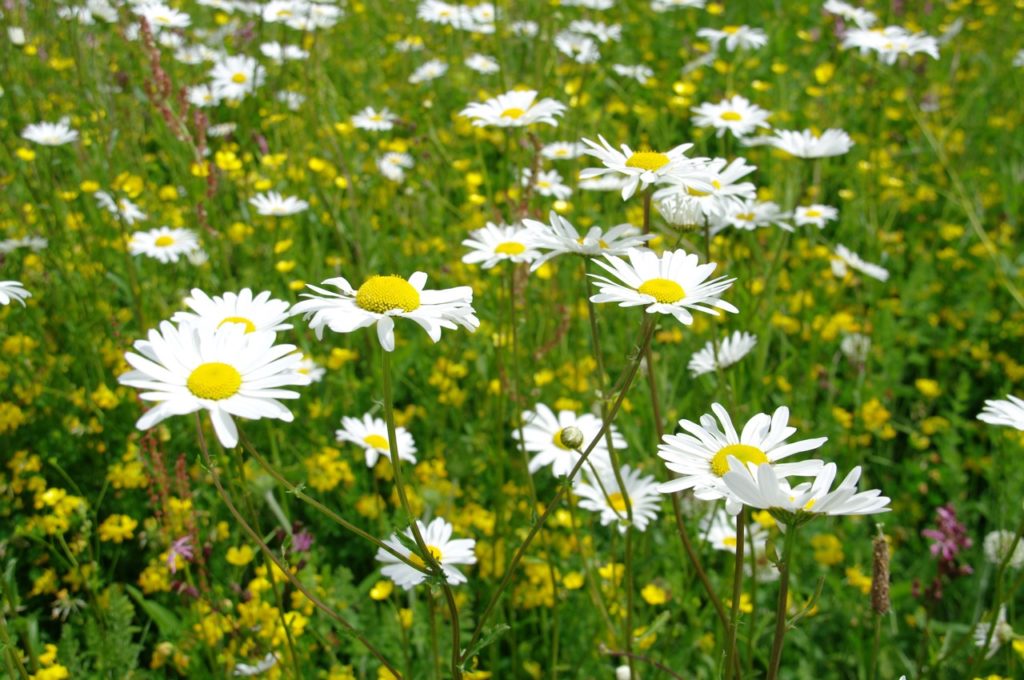
Since then and through further breeding, Shasta daisies are now available in a range of different sizes, shapes and even colours.
Shasta daisies are hardy and tough and are able to survive all but the very worst winters here in the UK, as they can withstand temperatures down to -15°C.
Loved by pollinators, Shasta daisies provide a great source of nectar and pollen for bees and other insects when they are in flower during the summer months.
Common Varieties
Shasta daisies are often known for their white petals surrounding a yellow centre with either single or double flowers.
Shasta daisies are widely available here in the UK from garden centres and online suppliers.

Available in a range of sizes from 20cm tall dwarf varieties to some varieties nearly 1m in height, there is one to suit every garden.
Some varieties include:
L. × superbum ‘Real Galaxy’
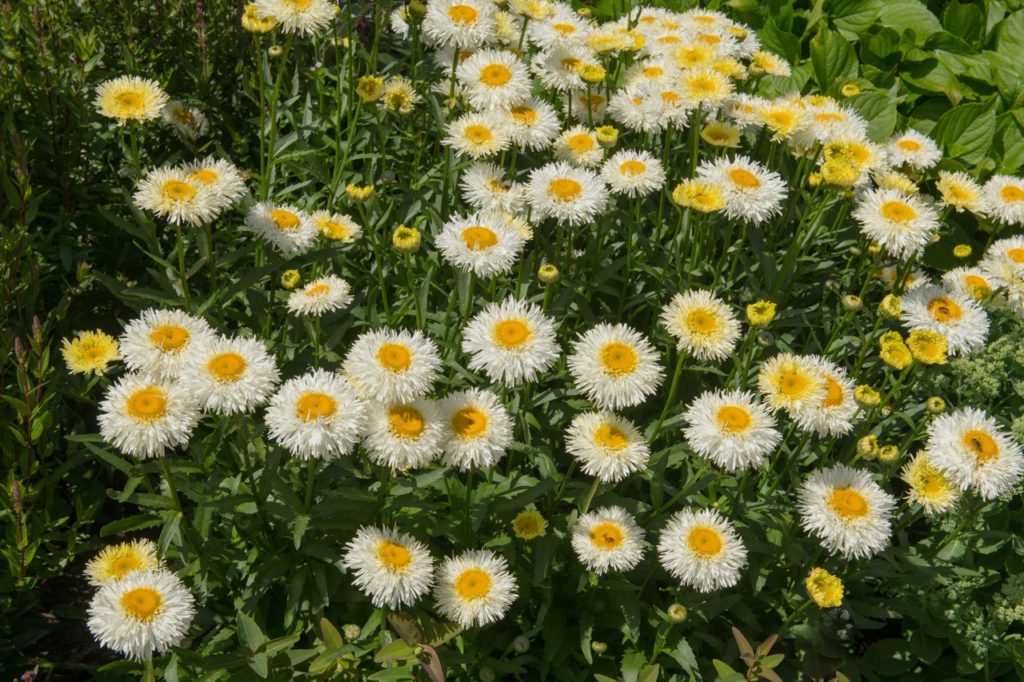
This variety produces stunning semi-double flowers with white petals.
Growing to a height of 60cm with a 45cm spread, it does equally well in a border or large container.
L. × superbum ‘Madonna’
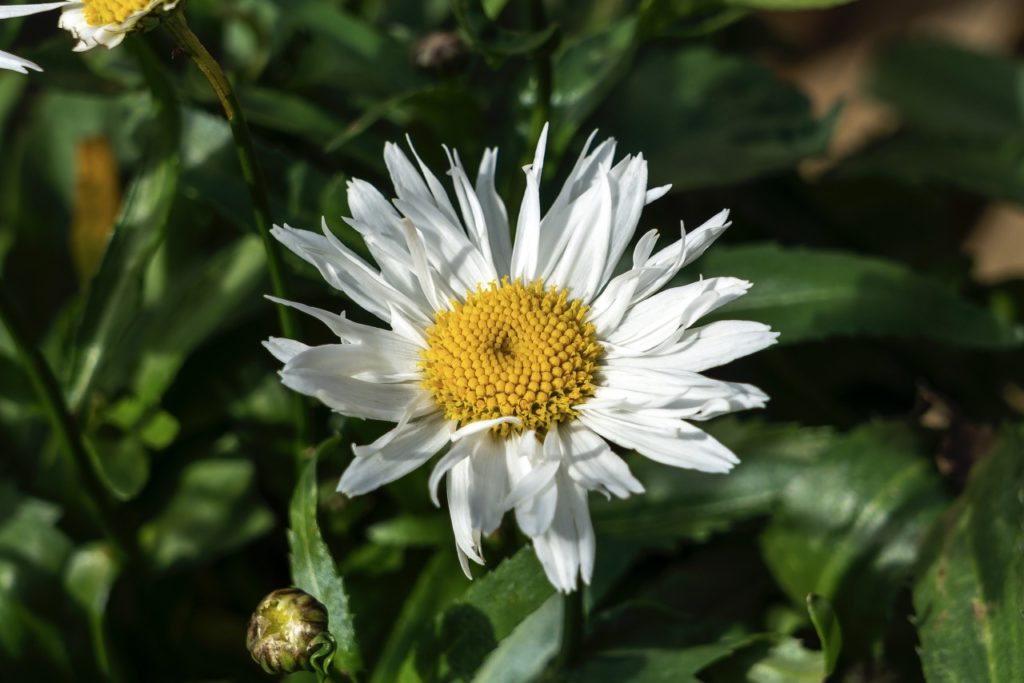
‘Madonna’ is a dwarf variety growing to only 20cm tall and wide, making it perfect for a pot.
With its classic white petals and yellow centres, it will flower from June until September.
L. × superbum ‘Banana Cream’
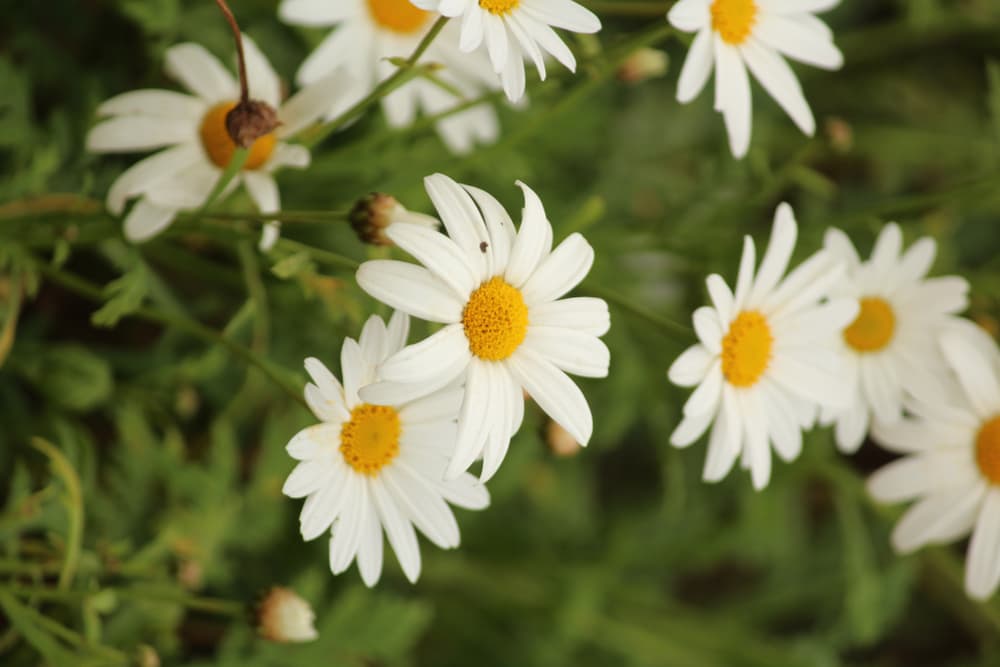
This variety is a real show-stopper.
Producing large 10cm diameter flowers with a yellow centre and pale lemony coloured petals, it can grow to up to 30cm tall with almost double the spread.
L. × superbum ‘Wirral Supreme’
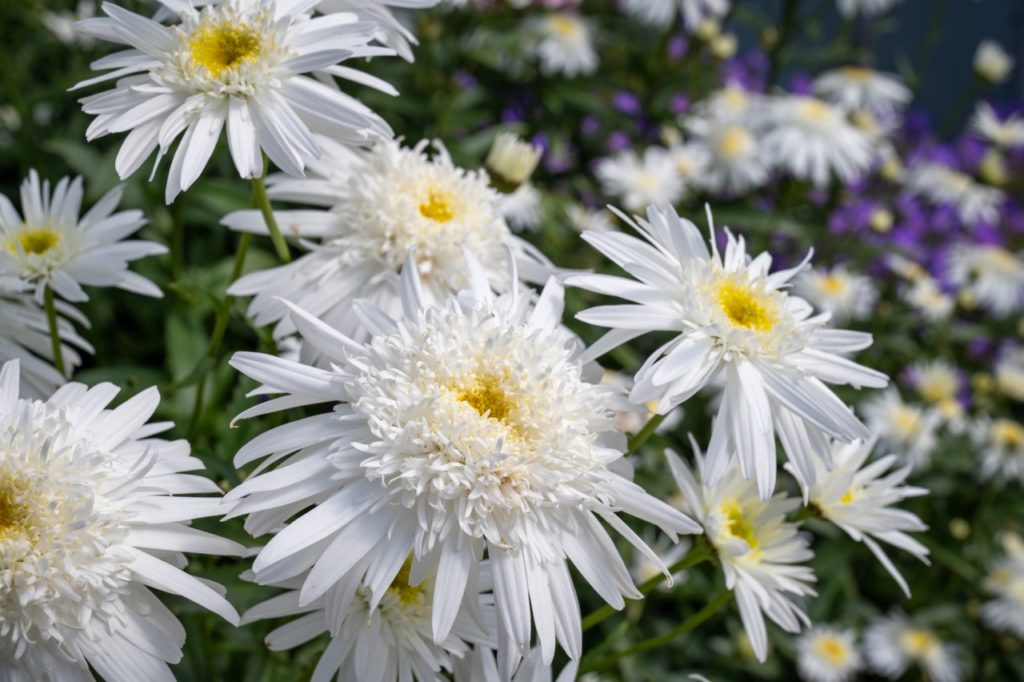
‘Wirral Supreme’ is definitely one for the border as it grows to 90cm in height over time.
With double flowers and a frilly centre, it is great when used as a cut flower.
Having been awarded the RHS Award of Garden Merit, it has been shown to perform reliably well in the garden.
L. x superbum ‘Real Dream’
‘Real Dream’ is a relatively small variety growing to only 40cm high.
Ideal for the front or middle of a border it produces an endless display of pale yellow flowers with darker yellow centres.
How To Grow Shasta Daisy
Where To Grow
Shasta daisies are a very tolerant plant.
Preferring full sun, a south or west-facing situation is ideal.
However, they will also grow in partial shade, although possibly flowering a little less.
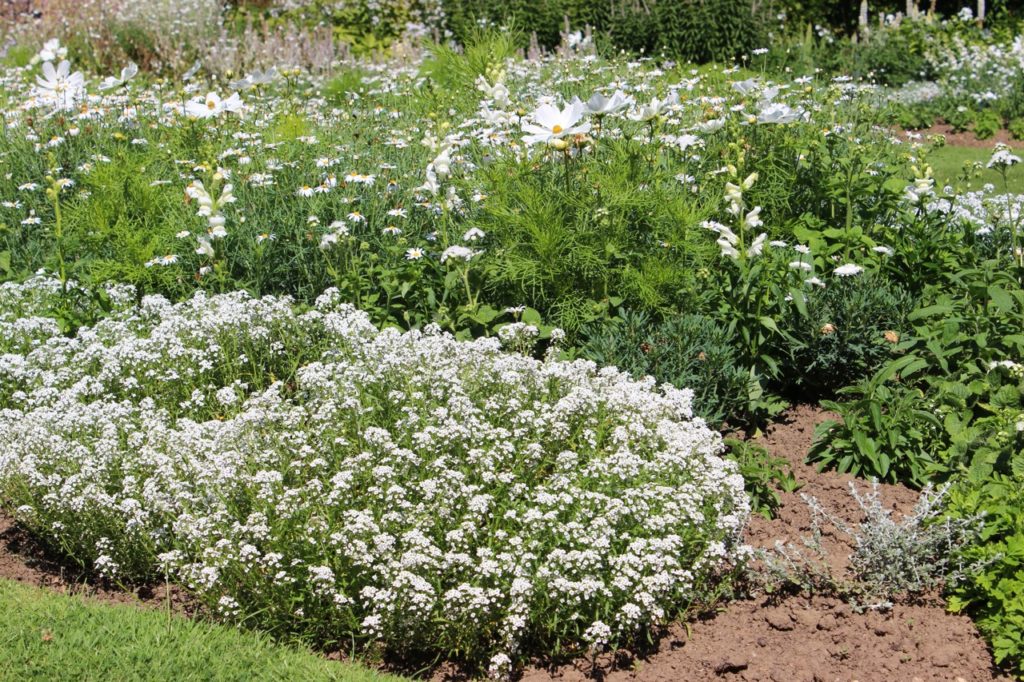
They will cope with any moist, but well-drained soil whether in a border or in a pot or container.
Shasta daisies do prefer to be out of the wind though, so do benefit from a bit of shelter.
Shasta daisies are an easy plant to grow and care for. Most often bought as plants, they can also be grown from seed or division.
Planting
Whether to grow in a border or in a container the ideal time to plant a shasta daisy is in spring or autumn.
If planting in a border, dig a hole twice as wide as the pot and at least as deep.
Plant the shasta daisy at the same depth it was previously planted and backfill with soil, firming in as you go.

If the soil is poor, it is worth adding some organic matter or compost at this stage to help feed the plant.
Water well on planting and until the plant is established, after which watering can be reduced.
When planting in a container the above guidance is the same, although it is recommended to use a potting soil mix to plant with.
Growing From Seed
Shasta daisies can be grown from seed, however, they will often not bloom until the following year, so a level of patience is required.
To grow from seed, sow the seeds in February to April in a seed or module tray, using a seed sowing compost and covering lightly.
Water gently or from below after sowing and keep moist and place on a windowsill or in an unheated greenhouse.
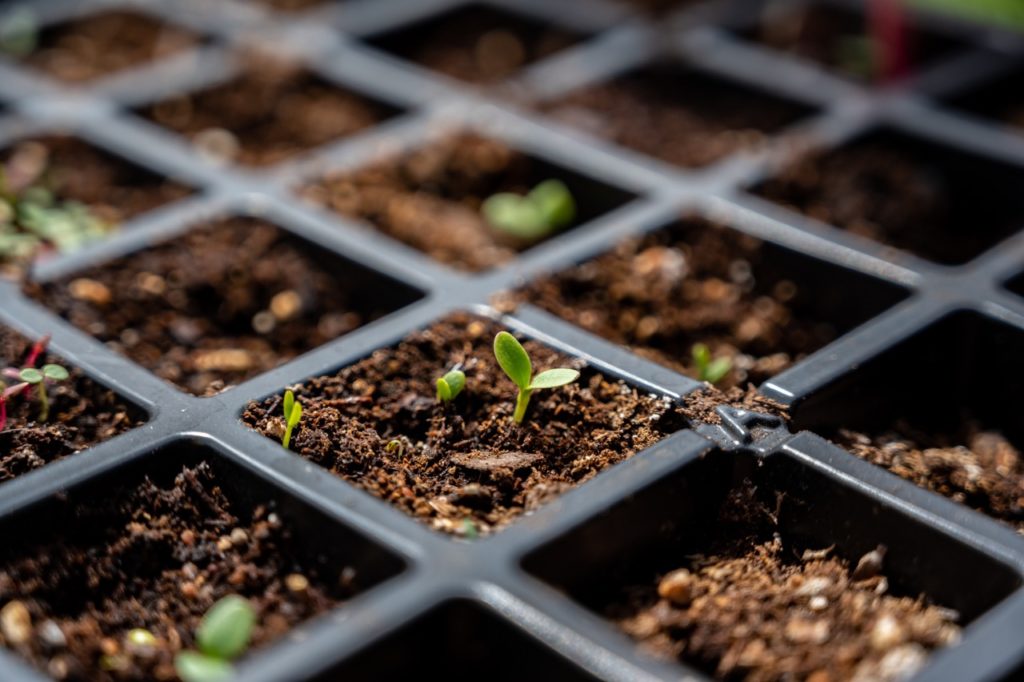
Germination usually takes 2-4 weeks and once the seedlings have grown their first true leaves, they can be carefully pricked out and potted on.
Keep undercover until the last frosts have passed and harden off before planting out.
If sowing outdoors, wait until the last frost has passed, usually around May to June, and sow thinly in a well-prepared seedbed raked to a fine tilth.
Keep watered and weed-free and once germinated, thin out to give the plants space to grow before moving them to their final position in early autumn.
Ongoing Plant Care
Pruning
Once established, Shasta daisies need little care except for deadheading and cutting back.
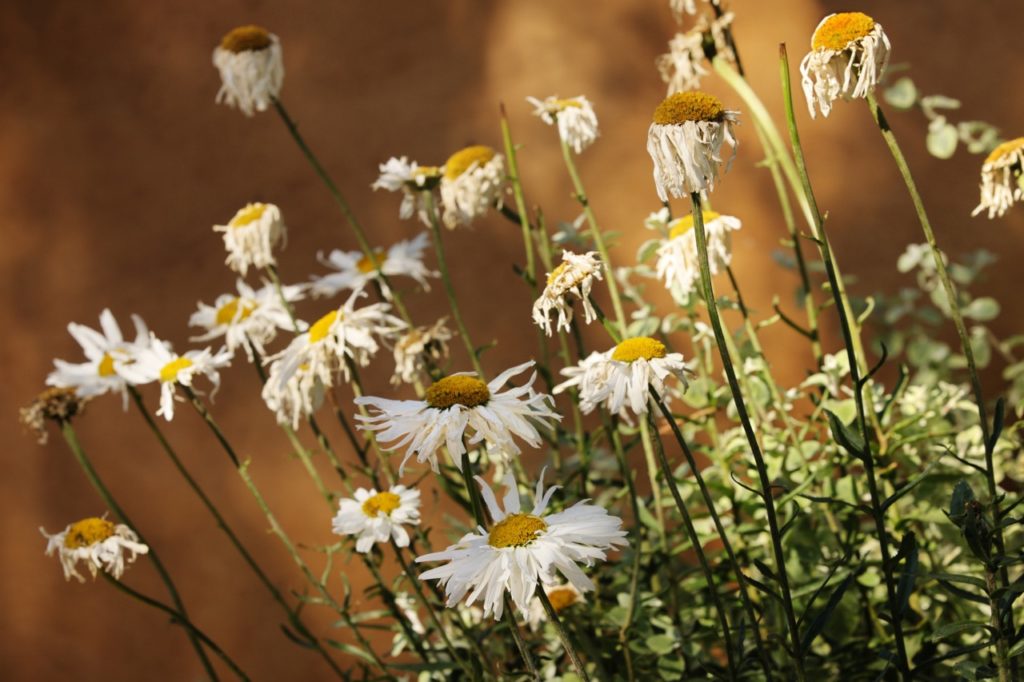
Once the flowers begin to fade, the blooms can be cut off to promote further flowering throughout the summer months.
After the first frost, the plant can be cut back to 3-5cm from the soil level to overwinter.
Feeding
As a perennial, come spring new growth will appear, which is the perfect time to add a slow-release fertiliser and a layer of mulch, which will help suppress weeds and conserve moisture during the growing season.
Supporting
Some of the larger varieties such as ‘Wirral Supreme’ and ‘Real Galaxy’ can grow quite tall and will certainly benefit from supports of some kind to prevent them falling over.
Whether homemade from bamboo canes or hazel sticks or if using metal supports, it is advisable to install these before the plant gets too tall, as it is far easier to do when the plants are still small.
Dividing
Shasta daisy plants can grow quite rapidly leading to large and sometimes congested clumps in only a few years.
It is advisable to divide the plants every 3-5 years or as required to keep the plants blooming well and to avoid them becoming overcrowded.

To divide lift the whole plant, ideally in spring, and cut away any dead wood.
Split the remaining plant and roots into smaller sections and plant at a spacing of 30cm to allow them room to grow or pot up in containers.
Companion Planting
Shasta daisies are easy to accommodate in most gardens, but perhaps suit a cottage style or informal planting scheme best.
Shasta daisies go well with many plants but perhaps look especially good when planted with perovskia, crocosmia and rudbeckia.

They are also a great perennial for a cutting patch as they have such a long flowering season.
Common Problems
Shasta daisies are generally unaffected by pests and diseases although they, along with many other plants, can be susceptible to aphids and verticillium wilt.
Aphids
Aphids are sap-sucking bugs that are often attracted to Leucanthemum plants and infestations can lead to reduced growth and curled or distorted leaves.
Usually visible to the naked eye, they tend to congregate on new growth and flower buds prior to opening.
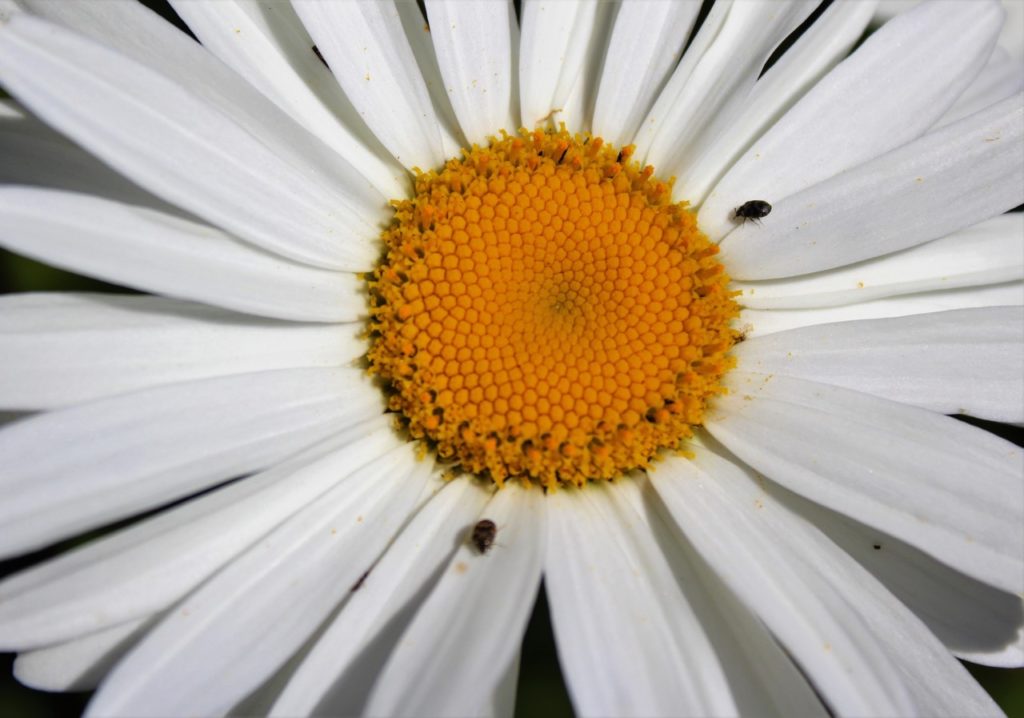
Check plants regularly from spring onwards and if found, present action can include squishing by hand where numbers are small and encouraging predatory ladybirds and hoverflies into the garden.
For severe infestations, organic sprays may be used.
Verticillium Wilt
Verticillium wilt is a common soil fungal disease that can affect ornamentals, fruit and vegetables – including Shasta daisies.
Symptoms can include the leaves yellowing and shrivelling up and the plant suddenly wilting in hot weather.
Depending on the severity, the affected plants may recover when cooler weather arrives and with heavy watering.
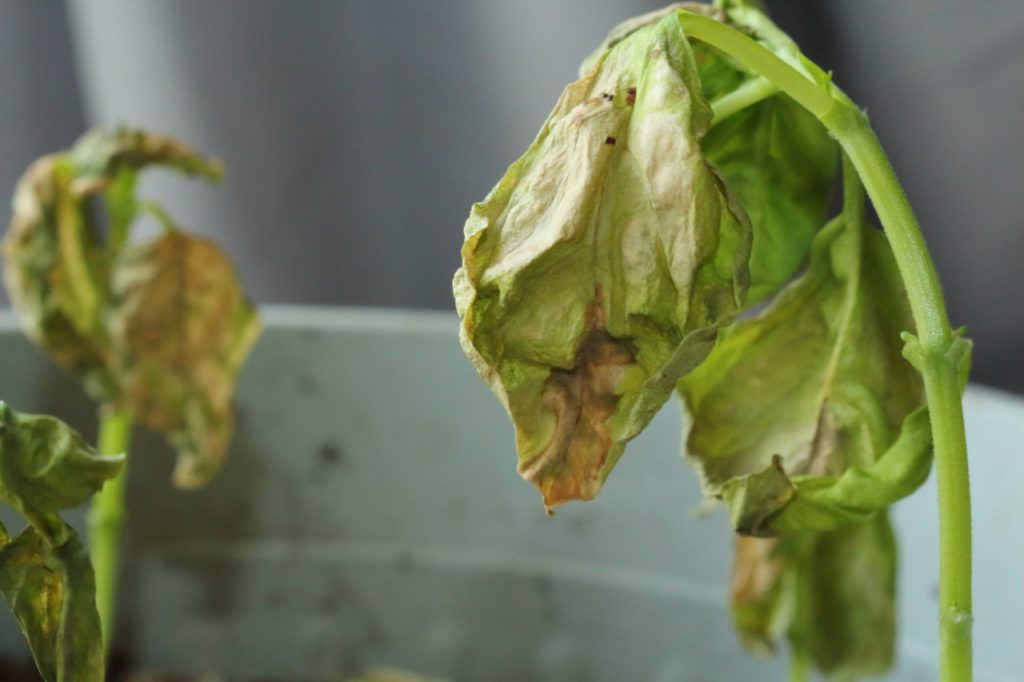
There is no chemical control available for verticillium wilt and the fungus can be spread through soil movement and contamination.
Therefore, care must be taken if verticillium wilt is confirmed and any infected plants and their roots disposed of and soil not moved around.
Once any infected plants have been removed, it is advisable to either replant with verticillium wilt-resistant plants or grass over the affected area for many years.
References
- 1Shasta Daisy. (n.d.). Retrieved March 23, 2023, from https://aggie-hort.tamu.edu/wildseed/shastadaisy.html
- 2Leucanthemum × superbum “Snow Lady.” (n.d.). Missouri Botanical Garden. Retrieved March 23, 2023, from https://www.missouribotanicalgarden.org/PlantFinder/PlantFinderDetails.aspx?taxonid=244692&isprofile=0&cv
- 3Daly, G. (2017, July 23). Shasta shines by the seaside. Independent. Retrieved March 23, 2023, from https://www.independent.ie/life/shasta-shines-by-the-seaside-35958048.html
